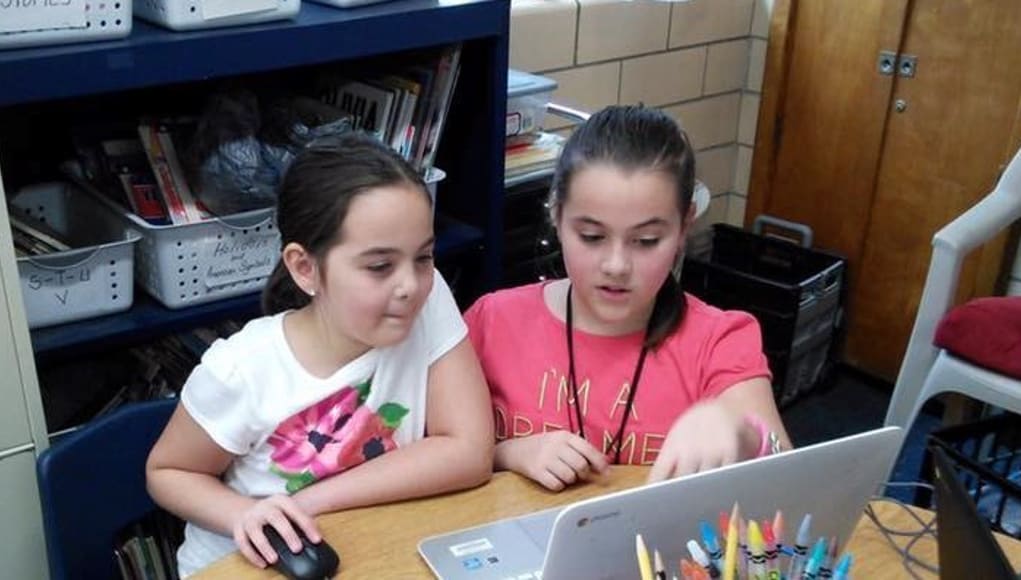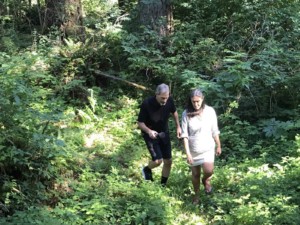Getting Smart Podcast | Superintendent Leadership For PBL

Mario Basora is superintendent of Yellow Springs Schools, a K-12 public school system in Ohio with 750 students. Mario grew up a C-student in California with little interest in school, but he crossed paths with educators during his college years who ignited in him a passion for education he didn’t know he even had.
So let’s listen in as Mario shares more with Tom about his journey from being an average student on the West Coast to a successful superintendent in Ohio who worked with community and staff to help their students become “Fearless Thinkers.”
Podcast Highlights
Growing up with a single mother in a low-income southern California, Mario Basora was bored in school–and his grades showed it. He stumbled into Orange Coast Community College and had an epiphany. He connected with his philosophy prof, bolted into academic overdrive and joined speech and debate. (Lesson #1, teacher relationships change life trajectories.)
While finishing a degree at Cal State Fullerton, Basora served as a camp counselor in the Appalachians where he met a girl. He moved to Ohio, attended Northern Kentucky University and then Miami University (Ohio). (Lesson #2, we are the young person we became at summer camp)
Basora taught in urban Cincinnati and began reading about critical pedagogy. He wanted to help kids do great things with their lives right now—not just after college. (Lesson #3, focusing on contribution rather than preparation provokes persistence and deeper learning.)
As a Cincinnati school administrator, Mario visited a school in the New Tech Network, which was his first opportunity to see high-quality project-based learning (PBL) in an urban setting. He had previously only seen PBL in gifted programs and private schools. The visit convinced him extended access to high-quality PBL would be the focus of his leadership contribution. (Lesson #4, school visits are the best professional learning.)
Seven years ago, Basora had the opportunity to lead Yellow Spring Schools, and his new team engaged the community and built consensus around a 2020 Strategic Plan to create “Fearless Thinkers.” The central focus is student learning for positive global change. (Lesson #5, make desired learning outcomes vivid and memorable.)
The student-centered plan focused on inquiry- and problem-based learning with six priorities:
- Make Sure Our Students Succeed
- Create an Innovative Teaching and Learning Model
- Develop High Performing and Diverse Faculty, Staff, and Administrators
- Fund the Future
- Ensure a Functional and Supportive Learning Infrastructure
- Explore New Structures for the Educational System

Superintendent Basora (@suptbasora) believes students learn by doing. Yellow Springs students help plan projects and build rubrics. (Lesson #6, engaging projects are great–especially when aimed at important outcomes.)
After visiting High Tech High and EL schools and lots of Buck Institute training, Yellow Springs teachers created a culture of critique and revision–students often make seven to 20 revisions to achieve a high-quality product. (Lesson #7, developing a culture of revision, where high-quality products are valued, takes courage, community connections, and sustained effort.)
Basora highlighted a few signature projects:
- Elementary students spotted a need for handicap access, advocated for it with the city, and saw the results of their effort.
- For the second year in a row, middle school students have gone Into the Wild: a collaborative, interdisciplinary project that involves a 65 mile bike ride, a canoe ride, and two nights of camping. Teachers incorporate science, social studies, math, literature study and writing.
- High school students asked, “Is it too lates to save the planet?” The 10th-grade interdisciplinary project involved project teams around interest areas. There are still beehives at school from teams that studied the disappearance of honey bees.
To develop “Fearless thinkers,” Mario encourages leaders to engage teachers and visit schools. He encourages a sustained focus on one thing to avoid innovation overload. (Lesson #8, Focus, focus, focus….just get the focus right.)
“Focus resources where you can change practice,” said Basora. He added, provide support, celebrate the small victories and move from a culture of “failure not an option” to “failing forward.” (Lesson #9, give teachers and students room to try and support in failure.)
Last lesson from Mario Basora (that’s #10): “Celebrate the small victories.” It pays big dividends.
For more, see:
- Equipping Young Leaders to Take on the 32 Most Important Issues of Our Time
- Getting Students Ready for the Gig Economy
- A Human Network to Remake Learning in Pittsburgh
Stay in-the-know with all things EdTech and innovations in learning by signing up to receive the weekly Smart Update. This post includes mentions of a Getting Smart partner. For a full list of partners, affiliate organizations and all other disclosures please see our Partner page.








0 Comments
Leave a Comment
Your email address will not be published. All fields are required.